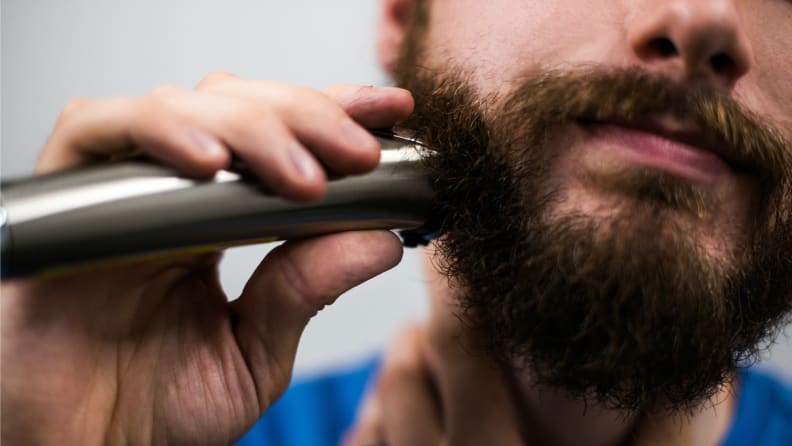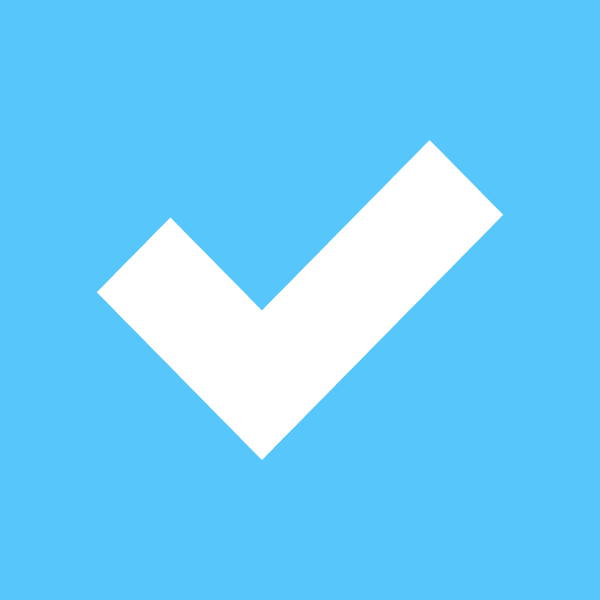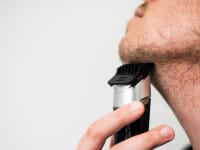Products are chosen independently by our editors. Purchases made through our links may earn us a commission.
It happens every year: Winter arrives and wreaks havoc on your facial hair. It doesn’t really matter whether it’s the cold from outdoors or the heat inside, because one unifying truth remains: From scruff to beards, facial hair needs extra care at this time of year.
To help you keep your beard healthy this winter season, we created a step-by-step cheat sheet of the things you should do in order to combat dryness like a pro.
Step 1: Wash your face with cool water, even in the shower
If you’re prone to taking steam-filled showers like me, this may be tough advice to follow, but hot water can dry out your skin and hair and lead to itchiness or flakiness.
Cool water, on the other hand, protects the hair cuticle, which you can think of as the shell that surrounds the delicate hair membrane. Warm or hot water might feel luxurious in the moment, but it’s actually encouraging an already-lifted cuticle to remain that way, whereas cool water will help it close back up, which traps in moisture and leads to smoother hair.
Step 2: Brush your beard regularly (it's actually exfoliating!)
Brushing your beard, and therefore exfoliating it, helps prevent the outermost layer of the skin from holding on to flakiness (brought about by dryness) and excess sebum (the oil produced by your skin’s sebaceous glands). When you add coarse beard hair to the mix, you’re also risking dandruff. To avoid all of this, make sure you’re exfoliating at least three times per week. Less than that will allow too much build-up over time, which can lead to blemishes. As a quick caveat, it’s possible to over-exfoliate; three times is the golden number for most people, but you know your skin the best!
Any sort of boar bristle brush will do the trick for a gentle physical exfoliation. Zeus makes a brush for all beard types, and it’s built to last you a while without needing a replacement. Brush upward against how your beard naturally falls (against the grain, if you will), and make sure the bristles touch the skin. Then, in small circles, brush it back into place. Voila!
Get the Zeus 100% Boar Bristle Brush on Amazon for $20.95
Step 3: Treat your skin below the surface
It’s easy to forget about the tender skin that dwells beneath your beard, but if you learn nothing else from this article, please take this away from it: exfoliate. Chemical exfoliation can sound alarming to someone who is just getting into the world of skincare, but hear me out. This step doesn't replace the previous one, but instead works with it to keep your skin and beard in peak condition because products with an active ingredient provide a subdermal treatment, meaning they work on the same issues from Step 2 but from inside the skin.
A common myth I’d run into when I worked at Sephora was that any cleanser with an active ingredient, such as salicylic acid for acne prevention, would dry your beard out. While there’s some truth to the idea that a routine too lush with chemicals can lead to your skin or hair needing more-than-usual hydration, as long as you rehydrate after the treatment is over to replenish any stripped oils, your skin and beard will be just fine.
In fact, it’s important to balance a physical exfoliator (like the bristle brush) with a chemical one because each provides its own benefits. By using a chemical exfoliant on the skin beneath your beard at least once a week, you’re going to get deeper down into the pores and clear away the things your physical exfoliator can’t reach. A note of caution: Start small by using a chemical exfoliator once every other week, to see how your skin reacts to it and never use one the same day you use the brush. Everyone’s skin is different, so finding the right balance is key.
In the winter, when the air is drier, this one extra addition to your routine will help you prevent excess sebum build-up, which can otherwise cause breakouts. This will also be important for when you’re wearing a face-covering outside. Sephora sells The Ordinary’s AHA 30% + BHA 2% Peeling Solution, which I’ve personally tried and think of as one of the best because it's easy to use. All you have to do is apply a few drops to clean skin, let it sit for 10 minutes, and then rinse it off with warm water.
Get the The Ordinary’s AHA 30% + BHA 2% Peeling Solution on Sephora for $7.20
Step 4: Dry your beard after washing your face
This may sound like a no-brainer, but it wasn’t for me when I first learned this tip: don’t let your beard air dry all the way. I keep the hair on my head fairly short, so it’s pretty routine for me to forgo any sort of special treatment when I’ve just washed it. I’ll generally towel it dry enough to walk from the bathroom to my bedroom without dripping water everywhere, and then I’m off to the races.
Admittedly, that’s not the best way to treat the hair on your head, but it’s especially bad for the hair on your face. You should gently towel dry your beard after washing it (or, really, after it gets wet for any reason) to prevent breakage. Any sort of absorbent towel will do, but if you have them, a terry cloth towel is great for this because they’re gentle and won’t tug.
Step 5: Consider adding a blow dryer to the mix
Now come the steps for topping off your beard routine. It may seem counter-intuitive to add heat into your routine, especially after the above points about breakage, but there are benefits. Not only will blow-drying your beard help you control how it looks, but it’ll also prevent any breakage that your hair might have experienced while it was wet and air drying.
Beardbrand, a men’s grooming company that began with Shark Tank, suggests a hair dryer with a concentrator nozzle attachment for additional control is a key part of the process. We recommend the Revlon 1875W Infrared Hair Dryer, our Best Value pick, because it’s inexpensive, powerful, and compact.
The steps are simple! Brush your beard up and away from the skin, aim the nozzle down at the beard hairs on the brush, and gently roll the brush downward. Once your beard is dry, use the cool shot button on the dryer to lock in your style and any remaining moisture and to lay the cuticle down again.
Get the Revlon 1875W Infrared Hair Dryer on Amazon for $23.82
Step 6: Moisturize, and then moisturize some more
Even though we’re talking about beards right now, I’d be remiss to neglect overall skincare, especially because there’s an easy routine change that will help improve the health of your beard hairs: Run any excess moisturizer from your face through your facial hair.
Running extra product from your fingers through your beard after moisturizing your face will act as a leave-in conditioner. For folks with shorter beard hair (verging on what most would consider stubble), this can potentially replace the need for an extra beard-specific product or two in your routine. For longer beards, you’ll want to test this step a few times; if you’re already using a dense moisturizer, it might be enough. If your moisturizer is on the thinner side and you have a long beard, you may need more.
At Sephora, I’d have guys ask me all the time if they needed an extra hydrating beard product, and the answer is really more nuanced than a simple yes or no. You know your skin and beard the best, and it’s important to ask yourself how it feels in certain climates and during different times of the year. If your skin or hair leans dry, the extra step may be worth the investment. In general, though, a good rule of thumb is to moisturize your skin, and at the same time, your beard, as well.
If you’re in the market for a new moisturizer and don’t know where to start, try the MoistureTrip by Glamglow. It’s one of my all-time favorites because it’s great for dry skin, doesn’t leave any sort of residue, and my facial hair drinks it in.
Get the Glamglow MoistureTrip Omega-Rich Moisturizer on Glamglow for $55
Step 7: Add a beard oil as the final sealant
A beard oil is helpful, especially in the winter months when used alongside your normal moisturizer, because it’ll do for your beard what it does for your skin: seal in moisture. When applied as a light layer to your beard, you’re locking in the hydration from your normal skincare routine and protecting the hair cuticle.
For me, deciding whether or not to use an oil depends on the length of my facial hair. When I’ve had a longer beard, an oil felt right because it ensured that the ends of my strands got the same hydration as the rest of my face where I used moisturizer. Other folks with shorter facial hair swear by a beard oil because their skin runs naturally dry. It’s really up to you whether you fully commit to an oil or not because everyone’s skin and facial hair is different, but try one if your hair feels dry or looks frizzy even after moisturizing.
Jack Black's Epic Moisture MP10 Nourishing Oil is easy to use and contains argan, olive fruit, jojoba, and grape seed oils to condition the hair and smooth frizz and flyaways. A few drops go a long way and it’s delicate enough to use on your skin, as well.
Get the Jack Black Epic Moisture MP10 Nourishing Oil on Sephora for $35
Step 8: Keep up with regular trims

Avoid split ends with regular beard trims.
Despite your best efforts, split ends happen. They’re the result of the hair cuticle being stressed or damaged beyond the point of repair, too much brushing, not enough hydration, or a combination of these things. As the name implies, this causes the individual strands of hair to appear split at the ends into a Y formation, into a three-way split, or into several splits that resemble a tree-like formation.
Unfortunately, there isn’t much to be done about split ends once they’ve occurred. You can, however, make it a point to trim your beard regularly to prevent any ends that may already have started splitting from traveling further up the hair shaft and causing more damage to the strand.
If beard length is your goal, trimming away split ends may sound counterproductive, but it’s a good way to expose healthy hair. Trimming even once a week will ensure you’re covering your bases—and will give you an excuse to keep the shape you’re aiming for.
If you don’t yet have a beard trimmer, check out the Philips Norelco MG3750, our Best Value pick. I’ve owned a few different iterations of this trimmer throughout my life and they’re amazing products that will not break the bank.
Get the Philips Norelco MG3750 on Amazon for $19.95
Step 9: Keep it covered when it’s especially cold outside
In our current world where face masks are necessary for any sort of outdoor traveling, this point may seem obvious, but it’s a good one to remember for future situations where you might be met with cold air without a face covering.
Intense cold is not good for your beard, in the same way it isn’t good for your skin. Cold weather outside and low humidity indoors from heaters can zap the moisture from your skin, even if you’ve used a moisturizer and an oil in your morning routine.
Although there isn’t much to be done about the effects of indoor heating on your beard, you can certainly cover it up with a scarf outside—that is if your N95 doesn’t cover the whole thing comfortably, of course.
Step 10: Spot treat any blemishes as they come
Rather than using a salicylic acid treatment all over the skin beneath the beard, keep a spot treatment handy for those times when you develop an ingrown hair or a pimple.
One of the biggest complaints I heard from men during the frigid months in New England was that their active ingredient face wash was already too drying, so when winter hit, they’d start to itch and flake. For that reason, keep a targeted treatment for blemishes on hand and stick to a gentle face wash otherwise.
Origins makes a great spot treatment with 1.5% salicylic acid, which is a hefty (but safe!) dose. Dab a tiny bit onto a cotton swab and place the product where you need to between your beard hairs, and with just a bit of a massage from your fingertip, you’re good to go.
Get the Origins Super Spot Remover Acne Treatment Gel on Sephora for $19


